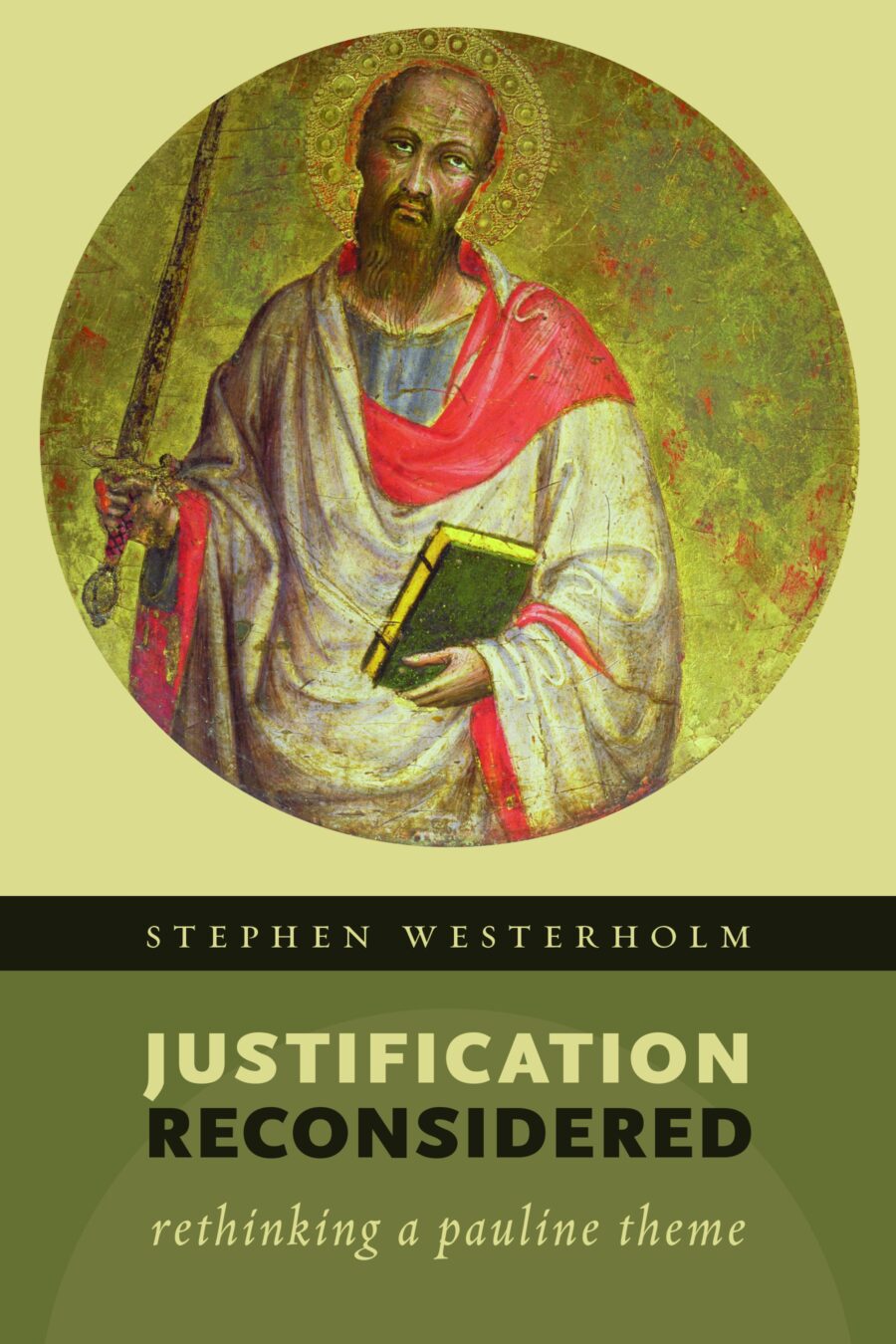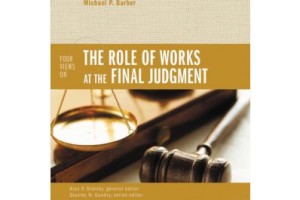There continues to be a swirl of popular interest in the now not-so-new “New Perspective on Paul.” In Justification Reconsidered: Rethinking a Pauline Theme, Stephen Westerholm attempts “to update and to make more widely accessible earlier work” (viii), and thus demonstrate why he has not been persuaded by recent “revisionist” readings of Paul. The concise work consists of six chapters, each of which attempts to briefly describe key proposals from six scholars associated with the New Perspective: Krister Stendahl, E.P. Sanders, Heikki Räisänen, N.T. Wright, James D.G. Dunn, and Douglas A. Campbell. Finally, Westerholm’s own views on the Pauline theme are summarized in the last chapter.
Our review begins where Westerholm concludes with his “nutshell” description of justification (95-9). The search for a gracious God, contends Westerholm, is far from being unique to the modern, ‘introspective’ West. Rather, this search is undertaken by any who recognize that a good Creator will restore his good but marred creation, and in the process he will judge those responsible for the corruption. One way in which Paul speaks of salvation from this plight is through justification by faith: those who are unrighteous because of wrongful behavior and thus unfit for the kingdom of God are declared righteous because Christ took their sins upon himself, providing atonement by his sacrificial death. The Apostle’s critique of Judaism was not that it was “legalistic,” rather the critique was aimed at the Torah’s inability to provide righteousness based on Paul’s distinct view of radical human sinfulness.
Each point in Westerholm’s description of justification emerges in distinction to the views engaged with previously in the main chapters. He argues that justification is one way of answering the sinner’s search for a gracious God in contrast to Stendahl’s critique of Reformation readings which anachronistically discover the Western ‘introspective’ conscience in Paul (4). Then, according to Westerholm, because of the absolute necessity of Christ’s death for all humanity, two theological points emerge for Paul: first, “exclusive reliance on grace that was foreign to the thinking of contemporary Jews” (in dialog with Sanders view of Judaism, 34) and, second, that unregenerate humanity’s ability to do good is actually illusory (in response to Räisänen’s accusation of inconsistency within Paul, 43-7). In his effort to define terms, Westerholm argues that righteousness is “what one ought to do” (in contrast to Wright’s “covenant membership”, 58–63) and that works of the Law are the “‘righteous’ deeds required by the law” (in contrast to Dunn’s “boundary markers of the Jewish people”, 98). Finally, Westerholm attempts to distinguish his view of justification from Campbell’s foil of “Justification Theory” by observing that the moral demands of God are “the conditions of living in, and maintaining, a rightly ordered cosmos” (91, emphasis original), not a “severe contract rigidly enforce by a God who is less than good” (93).
Westerholm’s contribution clearly and charitably presents the arguments of his interlocutors as well as making his own position widely accessibly outside the scholarly guild. He deals exclusively with biblical texts and only the most relevant secondary literature beyond his six interlocutors. Particularly helpful heuristically, the work untangles “The New Perspective,” not treating it as a monolithic school of thought, but distinguishing key contributions associated with particular scholars who hold divergent views, despite being commonly lumped together under the new perspective umbrella.
Concerning justification itself, Westerholm rightly situates the theme in a broader frame of reference, particularly by starting with the human culpability for marring the good creation made by a good creator. In so doing, he suggests a plausible situation in which Paul’s readers were in fact seeking a gracious God, strongly suggesting that Stendahl has driven too strong a divide between the themes of ‘Gentile inclusion’ and ‘pursuit of a gracious God’. Indeed, Westerholm rightly presses those who exclude the latter theme to reckon with why Gentiles would feel any desire join the Christian movement in the first place. Westerholm’s point pushes the discussion toward the question of how the human problem of salvation from God’s wrath connects to the Jewish problem of inclusion in Abraham’s seed.
That being said, Westerholm does not actually take up this discussion of how salvation from God’s wrath and Abraham’s seed connect. His characterization of Gentile inclusion as the “social implications” and what the doctrine meant “on the ground” (98-9) does not adequately account for the continual recurrence of the ‘Jew plus Gentile theme’ in connection to justification. Galatians 3 and Romans 4 suggest that Paul’s description of justification by faith is inextricably linked to Abraham and his seed as Jew plus Gentile. Westerholm framed his discussion of justification with the Thessalonian and Corinthian correspondences to show that Paul’s gospel offered salvation from God’s wrath (4–13). However, I wonder if an examination of Rom 3-5 would have been more to the point; here Paul moves from justification by faith, to Abraham and his seed, all summed up with reconciliation and salvation from God’s wrath. In so doing, Westerholm’s discussion of justification would still be framed by ‘sinners seeking salvation from God’s wrath’, while at the same time providing occasion to more fully incorporate ‘Abraham’s seed as Jew plus Gentile’ into the discussion.
The Bottom Line: Justification Reconsidered provides a concise tool for students to enter into the debates surrounding the new perspective on Paul, charitable descriptions of key contributes from various authors, and clear critiques of these positions.
Review by Matt Ketterling (mk84@st-andrews.ac.uk)
University of St. Andrews





1 Comment
Leave your reply.